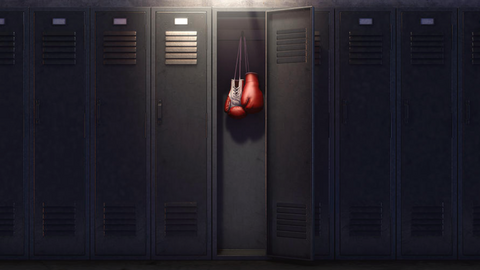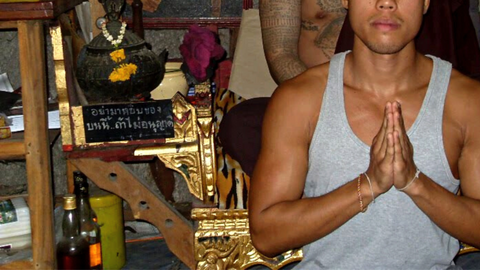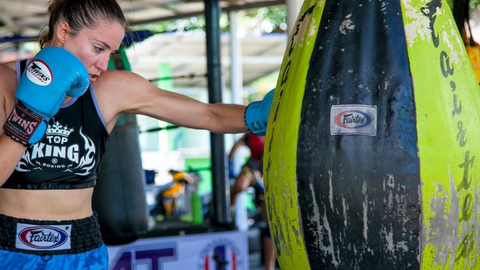How to Condition Your Shins for Muay Thai
How to Condition Your Shins for Muay Thai
One of the most talked-about and feared aspects of Muay Thai is shin conditioning. Powerful kicks and devastating blocks are only effective if your shins are tough enough to handle impact. But despite the myths, shin conditioning doesn't mean endlessly kicking trees or causing long-term damage. It’s about building up micro-resilience over time, training your nervous system to handle contact, and developing proper technique.
In this guide, we’ll cover safe and effective ways to condition your shins for Muay Thai—from beginner-friendly drills to long-term strategies that reduce injury and improve your kicking power.
Why Shin Conditioning Matters
Shin conditioning allows fighters to:
-
Deliver stronger kicks with less pain
-
Block effectively without fear of injury
-
Improve confidence during sparring and fights
-
Reduce long-term swelling and bruising
While genetics play a role in how fast you adapt, anyone can build tougher shins with consistency and proper gear.
Start With Controlled Impact
The best way to begin shin conditioning is through controlled repetition, not violence. Focus on technique and accuracy before intensity.
One of the best tools for beginners is the heavy bag. Regularly kicking a firm but forgiving bag allows your bones and nerves to adapt gradually.
We recommend using our Muay Thai heavy bags for this purpose. They offer the right balance of resistance without risking excessive trauma for beginners.
Start with:
-
3 to 5 sets of 10 kicks per leg
-
Focus on the lower half of the shin
-
Gradually increase intensity over time
Avoid kicking with the foot or ankle. You want consistent contact with the lower third of your shin.
Consistency Over Brutality
Forget the old-school myths about kicking metal poles or hard surfaces. True shin conditioning comes from repetition, rest, and recovery.
Key principles:
-
Train shins 3–5 days per week
-
Avoid overdoing it—if you bruise badly, rest and recover
-
Combine with proper technique to avoid long-term damage
You don’t need to suffer to toughen up. Instead, rely on consistent pad work and bag work using your training gear to build resilience over time.
Supplement With Pad Work
Incorporating pad work into your routine helps bridge the gap between bag conditioning and sparring.
Have a partner or coach hold Thai pads and work on roundhouse kicks, teeps, and knees. You’ll not only condition your shins but also improve accuracy, balance, and timing.
Make sure your partner knows when to add pressure or resistance. This creates a more realistic training environment and allows your body to adapt to different forces.
Ice Massage and Recovery Techniques
Recovery is just as important as the training itself. If your shins feel swollen, sore, or tender after a session, it’s a sign they need rest—not more punishment.
Recovery tips:
-
Ice massage for 10–15 minutes post-training
-
Magnesium cream or arnica for bruising
-
Compression sleeves for circulation
Our ankle supports can also help with post-session stability and mild compression, especially for fighters prone to swelling.
Sleep and hydration also play a huge role in how quickly your body adapts. Don't overlook them.
Shin Rolling: When and How
Some fighters use shin rollers (smooth steel or wooden sticks) to desensitize nerves and stimulate bone adaptation. While this can be effective when done lightly and infrequently, it’s not a replacement for impact training.
If you choose to do this:
-
Roll gently, not aggressively
-
Only after proper warm-up
-
Avoid areas that are already bruised or inflamed
This technique should be used as a supplement, not your main form of conditioning.
Spar Lightly With Shin Guards
Once your shins have adapted to bag and pad work, light sparring is the next step. Wearing Muay Thai shin guards allows you to build timing and blocking skills without causing unnecessary pain or injury.
Choose shin guards that offer full coverage, a secure fit, and don’t shift during movement. You want to be focused on your technique—not adjusting your gear.
Light sparring helps reinforce your conditioning in a live environment, preparing you for harder rounds down the line.
Long-Term Shin Health
Shin conditioning is a long game. Just like building muscle, your bones and nerves adapt over months, not days.
Tips for long-term durability:
-
Always warm up before shin drills
-
Monitor your pain—sharp pain is a red flag
-
Invest in high-quality Muay Thai gear that supports your goals
Neglecting recovery or forcing your body to adapt too quickly often results in stress injuries, chronic bruising, or worse—losing the ability to train consistently.
Final Thoughts
Conditioning your shins for Muay Thai is about smart, progressive adaptation. It’s not about ego or pain tolerance. With consistent bag work, pad drills, smart sparring, and proper recovery, you’ll develop the toughness you need to kick hard, block confidently, and stay in the fight.
At Legacy Fight Goods, we design gear that helps fighters train smarter. From heavy bags to shin guards and Thai pads, everything we build is made to support your growth, one kick at a time.
Train hard, train smart, and let your legacy begin.





